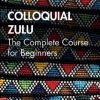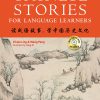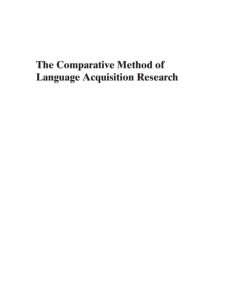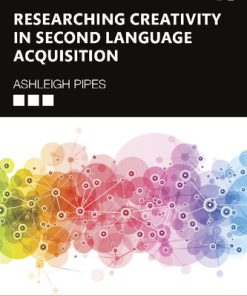Language Learner Autonomy Theory Practice and Research 1st Edition by David Little, Leni Dam, Lienhard Legenhausen 1783098589 9781783098583
$50.00 Original price was: $50.00.$25.00Current price is: $25.00.
Language Learner Autonomy Theory Practice and Research 1st Edition by David Little, Leni Dam, Lienhard Legenhausen – Ebook PDF Instant Download/Delivery: 1783098589, 9781783098583
Full download Language Learner Autonomy Theory Practice and Research 1st Edition after payment
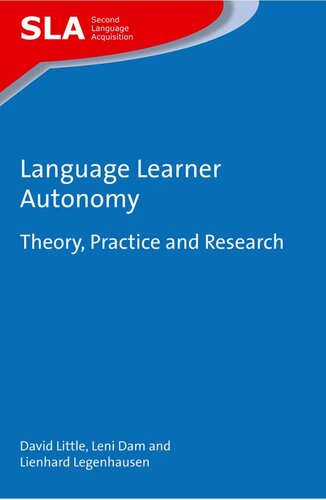
Product details:
ISBN 10: 1783098589
ISBN 13: 9781783098583
Author: David Little; Leni Dam; Lienhard Legenhausen
This is the first book on language learner autonomy to combine comprehensive accounts of classroom practice with empirical and case-study research and a wide-ranging engagement with applied linguistic and pedagogical theory. It provides a detailed description of an autonomy classroom in action, focusing on Danish mixed-ability learners of English at lower secondary level, and reports the findings of a longitudinal research project that explored the learning achievement over four years of one class in the same Danish school. It also presents two learner case studies to show that the autonomy classroom responds to the challenges of differentiation and inclusion, and two institutional case studies that illustrate the power of autonomous learning to support the social inclusion of adult refugees and the educational inclusion of immigrant children. The concluding chapter offers some reflections on teacher education for language learner autonomy. Each chapter ends with discussion points and suggestions for further reading.
Language Learner Autonomy Theory Practice and Research 1st Table of contents:
Part 1: The Autonomy Classroom in Practice: An Example from Lower Secondary Education
1. Using the Target Language: Spontaneity, Identity, Authenticity
Introduction
The Importance of Target Language Use
Learning Activities that Support Target Language Use
Learner-produced Learning Materials
Producing Communicative Written Texts
Conclusion
Points for Reflection, Discussion and Possible Action
Further Reading
2. Interaction and Collaboration: The Dialogic Construction of Knowledge
Introduction
Learning Through Dialogue
Interactive and Collaborative Learning Activities
Conclusion
Points for Reflection, Discussion and Possible Action
Further Reading
3. Letting Go and Taking Hold: Giving Control to the Learners
Introduction
Arguments for Giving the Learners Control
Handing over Control to the Learners
Conclusion
Points for Reflection, Discussion and Possible Action
Suggestions for Further Reading
4. Evaluation: The Hinge on which Learner Autonomy Turns
Introduction
What is Distinctive about our View of Evaluation and Assessment?
Introducing Learners to Evaluation and Assessment
Evaluation and Learners’ Developing Proficiency in English: Some Examples
Assessment and Official Grades in the Autonomy Classroom
Conclusion
Points for Reflection, Discussion and Possible Action
Further Reading
Part 2: Language Learner Autonomy: Evidence of Success
5. Exploring Learning Outcomes: Some Research Findings
Introduction: The LAALE Project (1992–1996)
Acquisition of Vocabulary in the Early Stages of Learning English
The Acquisition of Target Language Grammar
Acquiring Pragmatic Competence
The Reliability of Learners’ Self-assessment
Conclusion
Points for Reflection, Discussion and Possible Action
Suggestions for Further Reading
6. Language Learner Autonomy and Inclusion: Two Case Studies
Introduction
Case Study 1: Dennis, a Student with Behavioural Problems
Case Study 2: Susan, a Severely Dyslexic Student
Conclusion
Points for Reflection, Discussion and Possible Action
Suggestions for Further Reading
Part 3: Language Learner Autonomy: Meeting Future Challenges
7. The Linguistic, Social and Educational Inclusion of Immigrants: A New Challenge for Language Learner Autonomy
Introduction
Adult Refugees Learning the Language of the Host Community
Linguistic Inclusion and Learner Autonomy in the Primary School
Conclusion
Points for Reflection, Discussion and Possible Action
Further Reading
8. Teacher Education for Language Learner Autonomy: Some Reflections and Proposals
Introduction
Language Learner Autonomy and Classroom Discourse
Language Teacher Education for Learner Autonomy
Learner Autonomy and the Curriculum
Developing Learner Autonomy when Using a Textbook
Evaluation and Assessment
Conclusion
Points for Reflection, Discussion and Possible Action
Suggestions for Further Reading
Conclusion
People also search for Language Learner Autonomy Theory Practice and Research 1st:
8 learning styles gardner
8 learning styles
3 theories of language development
2 theories of language acquisition
Tags:
David Little,Leni Dam,Lienhard Legenhausen,Language
You may also like…
Uncategorized
Tense and Aspect in Second Language Acquisition and Learner Corpus Research 1st Edition Robert Fuchs
Linguistics - Linguistics
Metalinguistic Awareness and Second Language Acquisition 1st Edition Karen Roehr Brackin
Education Studies & Teaching - Teaching - Reading & Language
Uncategorized
Reference - Writing
Uncategorized
Linguistics
Talking About Second Language Acquisition 1st Edition by Karim Sadeghi ISBN 9783030997571 303099757X
Uncategorized

